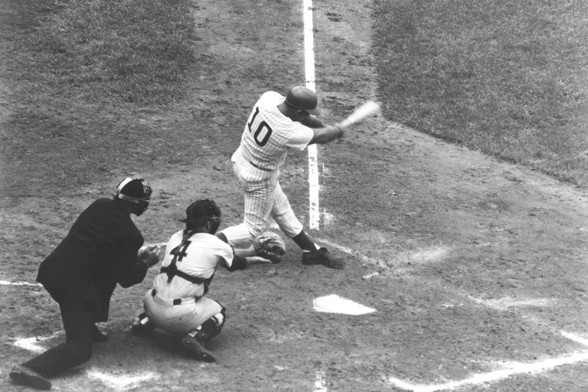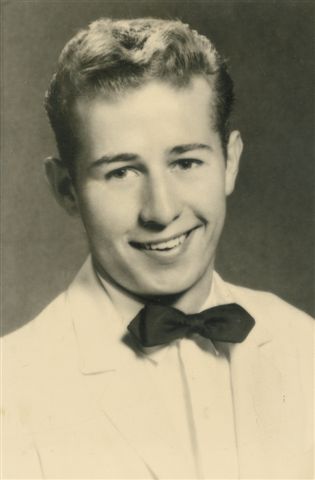
Franklin High School graduate Ron Santo, a Northwest sporting icon and one of the greatest players never to make the Baseball Hall of Fame, has died in an Arizona hospital (Dec. 2) after a battle with bladder cancer. Santo, 70, had been diagnosed with diabetes at age 18 and lost both of his legs to the disease. His funeral will be held next Friday at Holy Name Cathedral Parish in Chicago, his adopted home.
Originally drafted by the Cubs as an amateur free agent in 1959, Santo spent his entire 15-year career (1960-1974) in the Windy City, including 14 with the Cubs and one with the White Sox (1974). He became a nine-time All-Star, had a career batting average of .277, and won five National League Gold Gloves (1964-68), all as a third baseman. Santo hit above .300 three times, hit 30 or more home runs four times, and led the National League in walks four times.
Santo confronted numerous medical problems after he retired as a player, all stemming from cancer and diabetes. He underwent surgery on his eyes, heart and bladder after his doctors discovered cancer. He also underwent more than a dozen surgeries on his legs before he lost his right one to amputation in 2001, and his left one in 2002.

In a statement issued by the Cubs, team chairman Tom Ricketts said, “Ronnie will forever be the heart and soul of Cubs fans.” Ricketts lauded Santo for “his passion, his loyalty, his great personal courage and his tremendous sense of humor.”
Santo joined the Cubs radio team in 1990 and endeared himself to the team’s fans by making it clear that nobody rooted harder or agonized more for the “Loveable Losers” than he did. His broadcast style leaned heavily on cheers and groans.
“The emotion for me is strictly the love I have for this team,” Santo told The Associated Press in August of 2009. “I want them to win so bad.”
“Ron Santo was one of the finest men — and toughest men — I’ve ever known,” Cubs general manager Jim Hendry said Friday. “He was a credit to the game and a model of what a person should be like, always giving back to others his entire life.”
Santo, who grew up in Rainier Valley within sight of Sick’s Stadium, worked as a youth for the Seattle Rainiers as a bat boy, groundskeeper, clubhouse attendant and press-box gopher. He graduated from Franklin High in 1958 and was “discovered” and signed by long-time Seattle-based scout Dave Kosher.
Santo made his major league debut on June 26, 1960, and played his final game on Sept. 29, 1974.
CAREER HIGHLIGHTS
Selected to the National League All-Star team nine times 1963, 1964, 1965, 1966, 1968, 1969, 1971, 1972 and 1973.
Won five consecutive National League Gold Gloves, from 1964 through 1968.
Named the third baseman on the Sporting News All-Star Team from 1966-69 and in 1972.
Won the Lou Gehrig Memorial Award in 1973.
Hit .277 with 342 home runs, 365 doubles, 67 triples, 1,331 RBIs and a .362 on-base percentage in 2,243 games from 1960-74.
Led the National League in games played in 1963 (162) and 1965 (162).
Led the National League in on-base percentage in 1964 (.398) and 1966 (.412).
Led the National League in walks four times in 1964 (84), 1966 (95), 1967 (96) and 1968 (96).
Led the National League in Times On Base three times in 1964 (273), 1966 (276) and 1967 (275).
Led the National League in sacrifice flies three times in 1963 (11), 1967 (12) and 1969 (14).
Led the National League in triples in 1964 with 13.
Led National League third basemen in total chances eight times, putouts and assists seven times and in double plays six times.
Set the National League record for career assists (4,532), total chances (6,777) and double plays (389); all marks subsequently broken by Mike Schmidt.
Hit .300 or better three times, with a high average of .313 in 1964.
Hit 30 or more home runs four times in 1964 (30), 1965 (33), 1966 (30) and 1967 (31).
Finished his career as the second third baseman, following Eddie Matthews, to exceed 300 career home runs.
Hit two home runs in a game 26 times, last on June 9, 1974, against the Boston Red Sox at Comiskey Park.
Had five hits in a game three times on May 30, 1963 against the Mets in the Polo Grounds (5-for-6), on May 9, 1967, against the Giants at Wrigley Field (5-for-5), and on July 1, 1973, against the Mets at Wrigley Field (5-for-5).
Produced a career-high eight RBIs on July 6, 1970, against the Expos at Wrigley Field (hit a grand slam and a three-run homer).
Produced a career-high 28-game hitting streak in 1966.
First player in major league history to invoke the ten-and-five rule, under which a player with 10 years of service, including five consecutive with the same team, can decline a trade.
In 1966, became the first player to wear ear flaps while batting (a pitch had fractured a cheekbone).
Inducted into the Washington State Sports Hall of Fame in 1983.
Jersey No. 10 retired by the Cubs in 2003.
Inducted into the inaugural class of the Washington Interscholastic Activities Association Hall of Fame in 2004.
Ranked No. 7 on the list of baseballs greatest third basemen by the Baseball Page.com.
Ranked No. 76 on the list of the 100 Greatest Athletes in Washington state sports history by the Great Book of Seattle Sports Lists in 2009.
Despite his lofty career achievements, Santo did not come close to induction to the Baseball Hall of Fame in regular-election balloting. From 1980, his first year of eligibility, through 1998, his support from the Baseball Writers Association of America increased almost every year, but never enough to punch his ticket to Cooperstown. Santo’s Hall of Fame voting totals:
1980 BBWAA ( 3.9%)
1981-84: Off the ballot
1985 BBWAA (13.4%)
1986 BBWAA (15.1%)
1987 BBWAA (18.9%)
1988 BBWAA (25.3%)
1989 BBWAA (16.8%)
1990 BBWAA (21.6%)
1991 BBWAA (26.2%)
1992 BBWAA (31.6%)
1993 BBWAA (36.6%)
1994 BBWAA (32.9%)
1995 BBWAA (30.2%)
1996 BBWAA (37.0%)
1997 BBWAA (39.3%)
1998 BBWAA (43.1%)
Santo became eligible for Hall of Fame induction by the Veterans Committee after he had been retired for 20 years. In those votes, Santo finished third in 2003, tied for first in 2005, and again finished first in voting for the 2007 and 2009 inductions, but fell short of the required number of votes each year (by just eight votes in 2005). After major changes to the Veterans Committee voting process announced in 2010, Santo’s next opportunity for admission will come in voting for the induction class of 2012.
Alas, if Santo gains induction, the tragedy of his professional career will be that he won’t be around to enjoy it, and it was what he always wanted.

8 Comments
OK. Waiting for the other shoe(s) to drop …
Well, they seem ready to cut ties with much of their fanbase…
Was Kawasaki that big?
Felix? They may trade him flro A-Rod.
Miguel’s time with the team was limited once Jesus was acquired. But out of all the catchers I think he’s the one that the younger pitchers can learn something from. Ditto for Montero also. Sad to see Kawasaki go after having to tolerate players with barely half his enthusiasm and heart. But if he coudln’t beat our Ryan’s bat then there’s problems.
Can’t they dump Lincoln and Armstrong while they’re at it?
As I watched the series tonight, I saw yes, once again, a player became a star with another team.In return for Fister we got a maybe outfielder that hasn’t become a starter yet.